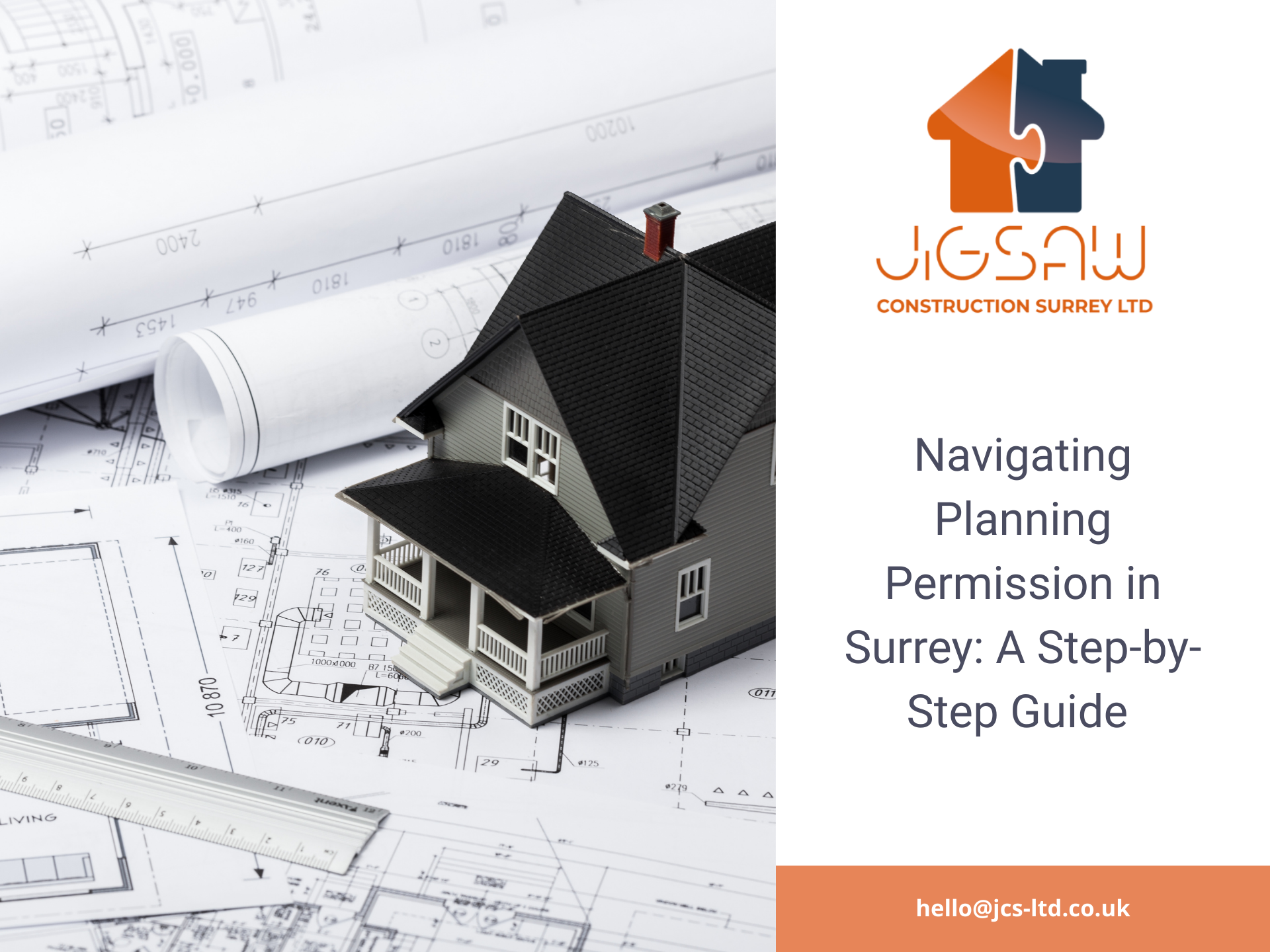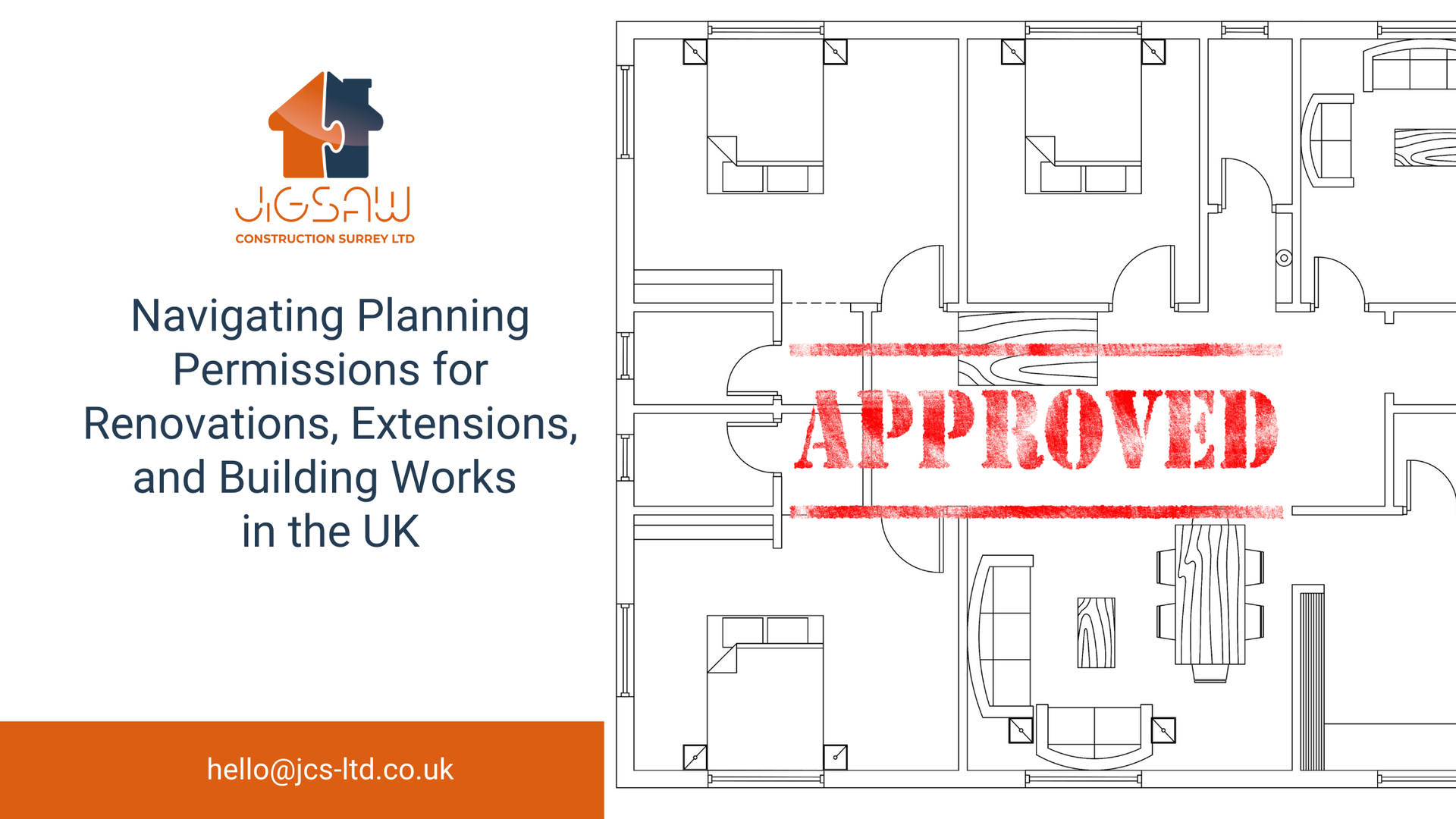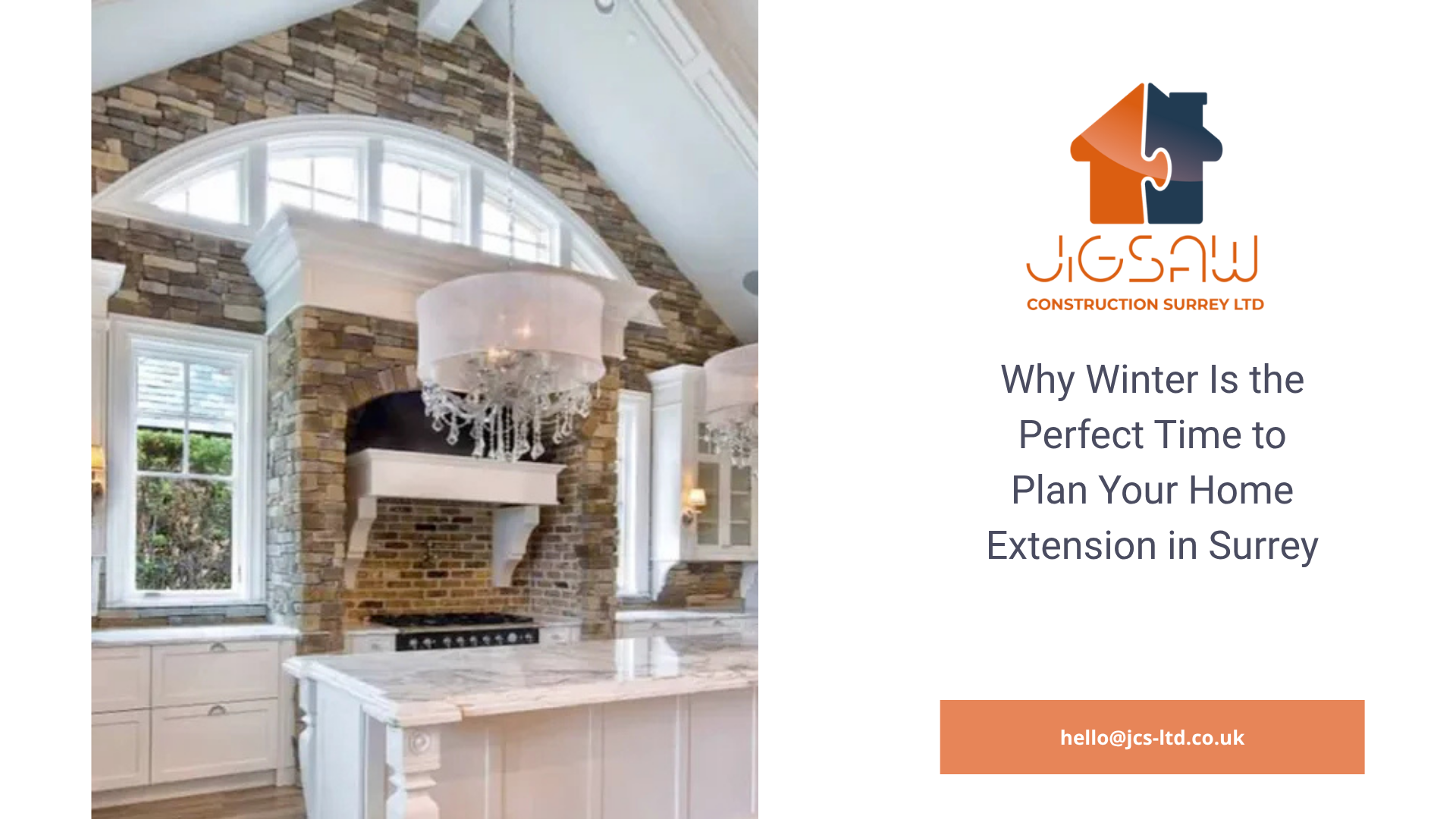Navigating Planning Permissions for Renovations, Extensions, and Building Works in the UK
When it comes to renovations, extensions, or any other significant building works, one of the most important things to consider is whether you need planning permission. In the UK, planning regulations are in place to ensure that development is safe, sustainable, and in keeping with the local environment. Whether you’re looking to extend your home, convert your loft, or build a new structure, it’s crucial to understand when planning permission is required and how to go about securing it.
What is Planning Permission?
Planning permission is the formal approval you need to carry out building works or change the use of land or buildings. It’s granted by the local council or planning authority in the area where your property is located. In general, planning permission is required for larger projects or works that could affect the surrounding area, but there are some exceptions, particularly with smaller, less invasive projects.
When Do You Need Planning Permission?
Certain types of works, particularly those that alter the structure or external appearance of a property, will typically require planning permission. Here are some common projects that may need approval:
1. Extensions and Loft Conversions
Adding extra space to your home, whether through an extension or loft conversion, is a common reason for needing planning permission. There are specific rules on how far you can extend your property and how the extension should blend with the existing structure.
2. Conservatories
While small conservatories may be covered by permitted development rights (which allow certain works without needing permission), larger conservatories, or those that extend into the boundaries of your property, will usually require full planning permission.
3. New Builds and Major Alterations
Any new build or major structural changes to a property, including changing the layout or converting commercial properties into residential homes, typically require planning permission.
4. Changes to the External Appearance
If you’re changing the appearance of the building by altering windows, doors, or the roofline, you may need permission. This is especially the case for listed buildings or properties in conservation areas.
5. Garden Structures
Sheds, greenhouses, or other garden structures can also require permission if they exceed certain size limits or are placed in prominent locations.
6. Swimming Pools
The construction of swimming pools or other large garden buildings may also require planning permission, especially if they affect the overall aesthetic or drainage of the property.
What Are Permitted Development Rights?
In many cases, small-scale works such as some types of extensions or conservatories can be carried out without the need for planning permission, under what’s called "permitted development." These rights allow homeowners to make certain changes to their property without applying for full planning permission, if they comply with specific restrictions.
However, there are many conditions that govern permitted development, including:
- Size limits for extensions or additions
- Restrictions based on the location and position of your property (e.g., proximity to boundaries or listed status)
- Limits on the height and depth of structures
- Restrictions in areas such as conservation zones
Before carrying out any work under permitted development, it’s essential to double-check whether your property qualifies and whether the work falls within the legal parameters.
How to Apply for Planning Permission
If your project requires planning permission, here’s a general guide to help you through the process:
1. Consult Your Local Planning Authority
The first step is to contact your local planning authority (LPA). They will provide guidance on whether your proposal requires planning permission and what rules apply in your area.
2. Prepare Your Application
You’ll need to provide detailed plans of the proposed works, including drawings and descriptions of the changes. You may also need to submit additional documents, such as site surveys, design and access statements, and environmental impact assessments.
3. Submit Your Application
Applications can be submitted online through the Planning Portal or directly to your local authority. The cost of the application varies depending on the type and scale of your project.
4. Wait for a Decision
Once your application is submitted, the local planning authority will assess it. This process usually takes about eight weeks for most applications. However, complex projects may take longer. If your application is approved, you’ll receive formal planning permission. If it’s refused, you have the right to appeal.
5. Building Regulations Approval
Even if you get planning permission, you will likely need to submit your building works to building regulations approval, which ensures the construction meets health, safety, and energy efficiency standards.
What Happens if You Don’t Get Planning Permission?
Carrying out building works without the necessary planning permission can lead to fines, legal action, or even the requirement to undo the work. If you’re unsure about whether you need planning permission, it’s always better to ask before starting. There may also be penalties for failure to comply with other legal requirements, such as not following the right building regulations.
Jigsaw Construction Surrey Ltd: Your Planning Partner
Jigsaw Construction Surrey Ltd offers comprehensive project management services to streamline your building projects. From assessing whether planning permission is required to handling the application process, we ensure a hassle-free experience. With our expertise, you can confidently navigate complex regulations and focus on your vision, knowing that every step is professionally managed. We work closely with local authorities, ensuring all submissions meet the necessary standards and guidelines for a successful outcome. Get in touch to discuss your next construction project!





